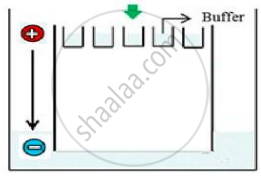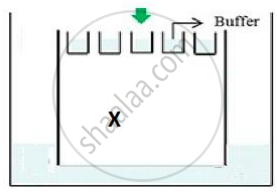Advertisements
Advertisements
प्रश्न
What are the protruding and hanging stretches of DNA produced by these restriction enzymes called? Describe their role in the formation of rDNA.
उत्तर
The DNA strand is cut by restriction enzymes between the similar two bases on the opposing strands, but just outside of the palindromic sites: The enzyme cuts both the foreign DNA and the vector DNA similarly. Only when the DNA sequence GAATTC is present does EcoRI cut the DNA between the nucleotides G and A. As a result, there are single-stranded, overhanging lengths at the end that are known to as sticky ends. Hydrogen bonds are formed between sticky ends and their complementary sliced opposites. The DNA ligase enzyme's function is made easier by the end's stickiness. Recombinant DNA was created as a result.

APPEARS IN
संबंधित प्रश्न
Mention the difference in the mode of action of exonuclease and endonuclease.
Do eukaryotic cells have restriction endonucleases? Justify your answer.
Answer the following question.
Explain the significance of palindromic nucleotide sequence in the formation of recombinant DNA.
Answer the following question.
Write the use of restriction endonuclease in the formation of recombinant DNA.
There is a restriction endonudease called as EcoRI. What does co part in it stands for?
DNA strands on a gel stained with ethidium bromide when viewed under UV radiation, appear as ______
Restriction enzymes that are used in the construction of recombinant DNA are endonucleases which cut the DNA at ‘specific-recognition sequence’. What would be the disadvantage if they do not cut the DNA at specific-recognition sequence?
Carefully observe the given picture. A mixture of DNA with fragments ranging from 200 base pairs to 2500 base pairs was electrophoresed on agarose gel with the following arrangement.

(a) What result will be obtained on staining with ethidium bromide? Explain with reason.
(b) The above setup was modified and a band with 250 base pairs was obtained at X.

What change(s) were made to the previous design to obtain a band at X? Why did the band appear at position X?
Given below is the stepwise schematic representation of the process of electrophoresis. Identify the 'alphabets' representing
- Anode end
- smallest/lightest DNA strand in the matrix
- Agarose gel

State the importance of elution in this process.
